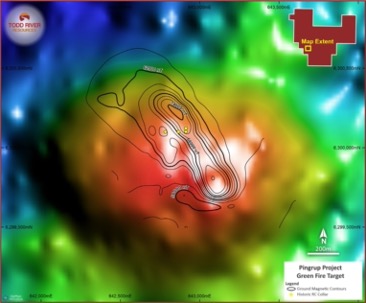Todd River Resources Limited (ASX: TRT) has commenced Air Core drilling following the completion of a comprehensive Moving Loop EM (MLTEM) survey at its wholly-owned Pingrup Ni-Cu-PGE Project in Western Australia.
The multi-phase work programme will initially consist of a number of reconnaissance Air Core drill lines to further map out the geology and geochemistry of the intrusions followed by a number of RC holes targeting specific features identified from the MLTEM survey. In addition RC drilling will target where the high points of the detailed gravity and magnetic feature are located.
“We’re excited to kick-off drilling this year at our Pingrup Project. The MLTEM survey has delivered a number of features that will be directly tested by RC drilling and the Air Core will give us a better understanding of the chemistry of the intrusions which is a critical dataset for refining our geological model,” Managing Director, Will Dix, said.
“The first drilling programme on a new project is always an exciting step for the company. We are well funded to carry out our exploration activities for 2023 and look forward to sharing the results of this programme and future drilling campaigns with shareholders as soon as they are received.”
MLTEM Survey Details
A moving loop survey was carried out at the Pingrup Project by GEM Geophysics. The survey employed a High Temperature SQUID sensor in the slingram configuration. Ten profiles were surveyed comprising 115 individual soundings and covering 10.6 line-kilometres. Surveying specifications were tailored for the detection of bedrock conductors. Surveying identified seven anomalies; which are coincident with magnetic anomalism and interpreted mafic/ultramafic geology.
Background
Exploration Licence E70/5954 covers an area of approximately 240sq. km within the Corrigin Tectonic Zone at the south west Yilgarn Craton–Youanmi Terrane boundary some 300km south east of Perth. The bedrock geology is obscured by thin (one to 10m) sandy cover and a thick weathering profile.
Within the project area are twelve magnetic features with historical work confined to just three of them. This work was completed by Magnetic Resources who were exploring the magnetic highs for the presence of Banded Iron Formation (BIF) hosted iron ore deposits between 2008-2011. In all three cases drilling failed to identify any BIF, however it confirmed the magnetic features to be mafic-ultramafic intrusions.
For further information please visit: https://trrltd.com.au/












